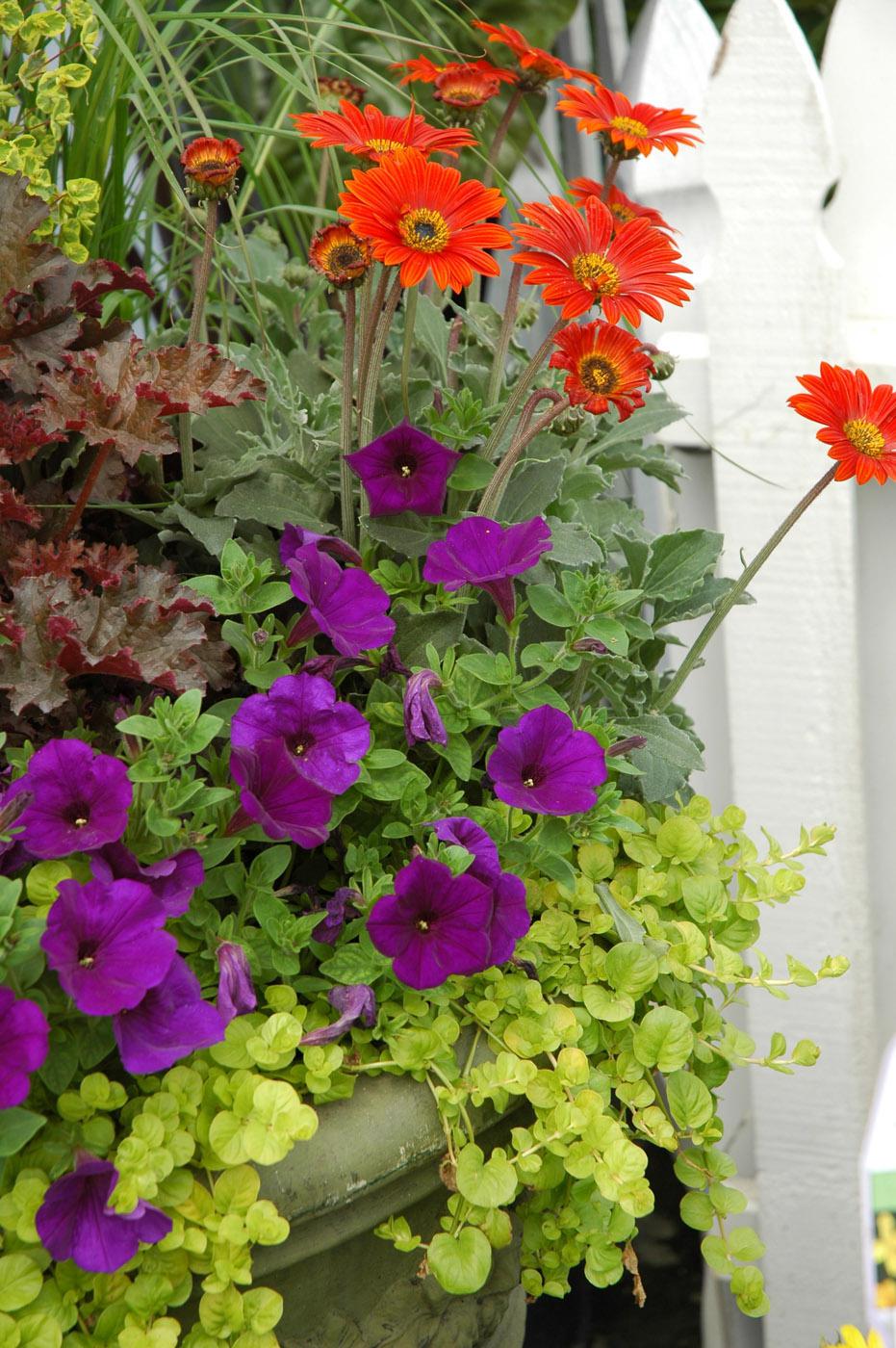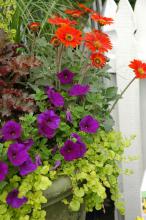Information Possibly Outdated
The information presented on this page was originally released on April 27, 2006. It may not be outdated, but please search our site for more current information. If you plan to quote or reference this information in a publication, please check with the Extension specialist or author before proceeding.
Have more fun with Goldilocks
By Norman Winter
MSU Horticulturist
Central Mississippi Research & Extension Center
If blondes really have more fun, then Goldilocks should be the key to a fabulous time in this summer's gardens.
Goldilocks is known botanically as Lysimachia nummulari, which also has the common names of Creeping Jenny and Moneywort. This Lysimachia is native to Europe and is perennial from zones 3 through 11. It's a pretty tough plant that can survive those extremes in temperatures.
Lime or chartreuse to golden-yellow colors are among the hottest trends for today's garden. Goldilocks follows this trend with leaves that resemble small discs. The leaves have a lime green color that will turn an iridescent yellow given more sun.
The word Lysimachia comes from the Greek lysis, the word for releasing, and mache or strife. It has soothing qualities, hence one of the common names, loosestrife.
I am green -- or should I say bright yellow -- with envy at a neighbor's house down the street that has a small ground cover patch right near the entrance. It seems no matter what they choose as companion colors, the combinations always dazzle.
These plants are not hard to find, so do a little bed preparation before you shop. Amend tight, heavy soil with 3 to 4 inches of organic matter and work it shovel deep, 6 to 8 inches. As you probably have gathered by now, I am a proponent of incorporating a little pre-plant, slow-release fertilizer.
When planting the lysimachia or any other perennial or annual, take care of not planting too deeply. Plant where the top of the root-ball is even with the surface of the soil. The Goldilocks as well as other varieties of Creeping Jenny will spread, so space them 12 to 18 inches apart.
Water plants to get them established, but then water sparingly. A light application of a slow-release, balanced fertilizer a month after transplanting should be sufficient for vigorous growth. Don't be afraid to pinch or prune as needed to keep them within their confines.
Though great as a colorful groundcover, they have some other incredible uses. Goldilocks would be superb falling over a wall. This works with ornamental sweet potatoes, but Goldilocks gives a more refined look -- less kudzu like.
My favorite use, however, is in mixed containers. You could not ask for a more colorful plant to be tucked in among colorful blooming annuals, perennials or even grasses. Not only will it serve as a colorful filler plant but as it grows, it will start to gently climb and then plummet over the rim of the container.
The lime green-golden color makes a most striking partner for plants like the Easy Wave Blue Petunia or one of my new favorites, the Sanguna Midnight Blue. Pentas or rudbeckias would work perfectly for the taller center plant.
In addition to Goldilocks, look also for Outback Sunset. This is another great groundcover, but it is a different species: Lysimachia congestiflora. With all of these wonderful new plants and uses, you have to admit it's a great time to be a gardener.


